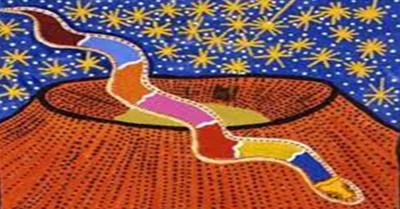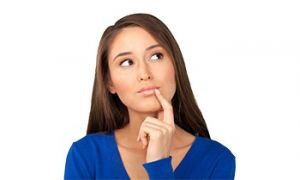Creation stories are mythological tales that describe a cultural or religious group’s beliefs about how the universe including its elements and beings was created. The following article provides information on What Are Creation Stories, the Importance Of The Rainbow Serpent and Tiddalik, the Benefits of Creation Stories and How They Can Be Incorporated Into Everyday Learning.
What Are Creation Stories
People learn about their past, traditions, and beliefs through creation stories, as well as about their current and former environments. In Australia, there are countless distinct Aboriginal and Torres Strait Islander cultures. While there are some parallels, each group has its own unique creation myths and languages. For more than 60,000 years, Aboriginal and Torres Strait Islander people have been passing down stories to future generations.
These tales frequently combine historical facts and scientific theories about how things came to be with cultural customs and valuable life lessons1. Many of the events that these tales describe are consistent with historical events as understood by science. According to several legends, the environment underwent massive and catastrophic changes thousands of years ago, including such as the ice age's subsequent sea level rise (at least 7000 years ago), extinct animals, floods, asteroid impacts, volcanic eruptions, and cyclones.
Storytelling is an oral tradition among Aboriginal and Torres Strait Islander peoples. So that the key aspects are easily remembered, these tales had to be memorable and frequently age-specific. Facts and lessons from cultural stories include survival advice and instructions for travelling along routes, for which song series (also known as "songlines") may serve as memory aids. These are transmitted from one generation to the next.
Since water is essential for living wherever one lives in Australia, a lot of these stories feature it. Waterways are used for transportation as well as for drinking and harvesting food and resources for technology. Localized narratives describe the formation of specific rivers, the source of the water, such as rain or groundwater4, and the effects on the local community.
Importance Of The Rainbow Serpent and Tiddalik
The Rainbow Serpent, also known by a variety of other names, is a key figure in Aboriginal creation myths throughout Australia and is frequently linked to the formation of natural features like rivers and landscapes. This entity is referred to as Mundagudda by the Bidjara of southern Queensland. 5 Mundagudda started its trek through the country, carving rivers and gorges as it went, in the Carnarvon Ranges in central Queensland. These kinds of tales reveal the origins of numerous rivers, which is crucial knowledge for locating water and navigating when travelling.
This is one of the reasons it's crucial that these stories are stated to be faithfully and unchangeably transmitted from generation to generation. These cultural tales are presented in a way that makes them captivating and simple to recall.
Another well-known tale involves a huge frog and can be found throughout Australia. This frog is known as Tiddalik in some places. The Pauline Gandel Children's Gallery and Bunjilaka Aboriginal Cultural Centre provide a rendition of Tiddalik's tale that is unique to the Gunnai Kurnai people of Gippsland, Victoria.
Tiddalik is gluttonous and consumes all the water from the sea, rivers, and billabongs. When the ground dries up, the animals must cooperate to try to find a solution so that everyone can once again have access to water to drink. The narrative serves as a cautionary tale about the negative effects of selfishness and disregard for the environment on both the inhabitants of billabongs and rivers and the plants and animals that depend on them.
Benefits Of Creation Storied and How To Implement Them
Foster Literacy
With their engaging narratives, archetypal characters and elemental locales, Creation stories make great choices during storytelling or story reading hour. As they listen to the adventures of the Rainbow Serpent and the Tjungala brothers, children willingly immerse themselves into the world of sounds, words and language. By listening to and repeating after their teacher, they become familiar with names and meanings which pave the way for foundational reading and writing skills
Nurture Creativity
Creation stories offer richly varied opportunities for children to express their creativity. Children can have great fun exploring indigenous practices of rock and sand art or Awelye which is the Anmnatyerre/Alyawarre word for designs applied to a woman’s body during a ceremony. When introducing stories or artwork talk about whose mob the story or artwork comes from and use the Aboriginal Australia map to illustrate this.
Build Cultural Competence
One of the underlying principles of the Early Years Curriculum Framework in Australia is respect for diversity. Integrating Creation Stories into both content and practices is essential if learners from Aboriginal and Torres Strait Islander families are to develop a sense of being and belonging as mandated by the EYLF. An equally important aspect of cultural competence is awareness of both similarities and differences in cultures. Since Creation stories can be found at the foundation of nearly every culture, it is a great way of helping children understand how despite differences in past and present ways of life, there are fundamental areas of commonality. For example, most creation myths from around the beginning with the theme of birth – perhaps because birth represents new life and the beginning of life on earth is imagined as the beginning of a child's life. Other common themes found in most creation myths are a Supreme Being (or two aspects of the same Supreme Being), recounting of genealogy, the conflict between good and evil and so on.
Build Environmental Awareness
By its very nature Creation stories talk of the time when the universe along with its elements and beings were created. Better known as Dreamtime stories, these narrate how the natural world including rocks, hills, trees, animals, plants, rivers and waterholes were brought into being by spiritual beings/ancestors. These creation stories then become the basis of Aboriginal lore and culture. Additionally, Creation stories can be used to help children learn the importance of respecting and protecting the environment. As opposed to the Eurocentric concept of Nature as something to be controlled and utilized for human material gains, Creation stories talk of how nature is animated by sacred spirits and mark a direct connection to one’s ancestors. Indeed stories like Ngapa Jukurrpa (Water Dreaming) are located in the extremely dry and remote areas of Puyurru and Pirlinyarnu where Aboriginal people had to find their water in soakages beneath the seemingly dry creek beds. In this way, Dreaming stories are repositories of ancient knowledge that teach humans to live in harmony with their environment.
Social and Emotional Learning
As creation stories have been traditionally passed down orally from grandparents and elders to children, embedding Creation myths in content and practice is a hugely powerful way to build a sense of belonging in children – not just to their cultures but to previous generations. Educators can plan to invite families and community elders for storytelling or art sessions based on Creation stories. Research has found that intergenerational community education not only nurtures children’s social development but their psychology as well, making them feel secure about their sense of self and place in the world.
Creation stories are passed down orally from generation to generation and contain significant information regarding culture, values, people, animals, and the environment. It is important to treat the creation stories of Aboriginal and Torres Strait Islander people with respect.
Reference:
Aboriginal Dreamtime Stories, Kate Own Gallery
Children, Myth and Storytelling: An Indigenous Perspective, Sagepub
Understanding And Respecting Creation Stories, University Of Melbourne







 As an Educator in Australia, your pay rate falls under the Children’s Services Award 2010. This award states the minimum amount that an employer can
As an Educator in Australia, your pay rate falls under the Children’s Services Award 2010. This award states the minimum amount that an employer can When working as a qualified Early Childhood Teacher (with a university degree) within a service, your rate of pay will come from the Educational Services
When working as a qualified Early Childhood Teacher (with a university degree) within a service, your rate of pay will come from the Educational Services When working as a Diploma Qualified Educator your pay rate is from the Children's Services Award 2010. This Award states your minimum rate of pay
When working as a Diploma Qualified Educator your pay rate is from the Children's Services Award 2010. This Award states your minimum rate of pay When working as a Cert 3 Qualified Educator, your pay rate is from the Children's Services Award 2010. This Award states your minimum rate of
When working as a Cert 3 Qualified Educator, your pay rate is from the Children's Services Award 2010. This Award states your minimum rate of Educational Leaders play a crucial role in their early childhood service by ensuring that the educational program aligns with best practices and supports the holistic
Educational Leaders play a crucial role in their early childhood service by ensuring that the educational program aligns with best practices and supports the holistic In early childhood education and care, ratios are more than a technicality—they are a frontline safeguard. Every child deserves responsive supervision, emotional connection, and developmental
In early childhood education and care, ratios are more than a technicality—they are a frontline safeguard. Every child deserves responsive supervision, emotional connection, and developmental Here’s a comprehensive Mobile Phone and Smart Watch Policy tailored for early childhood education and care (ECEC) services in Australia, aligned with the latest 2025
Here’s a comprehensive Mobile Phone and Smart Watch Policy tailored for early childhood education and care (ECEC) services in Australia, aligned with the latest 2025 With the new national child safety reforms kicking in on 1 September 2025, early childhood services like yours have a real opportunity to lead the
With the new national child safety reforms kicking in on 1 September 2025, early childhood services like yours have a real opportunity to lead the The Sea of Fish Challenge is a national initiative that invites children, educators, families, and communities to create and display fish artworks as a symbol
The Sea of Fish Challenge is a national initiative that invites children, educators, families, and communities to create and display fish artworks as a symbol Across the early childhood education and care sector, educators are sounding the alarm: current staffing ratios are insufficient to deliver safe, meaningful, and developmentally appropriate
Across the early childhood education and care sector, educators are sounding the alarm: current staffing ratios are insufficient to deliver safe, meaningful, and developmentally appropriate


